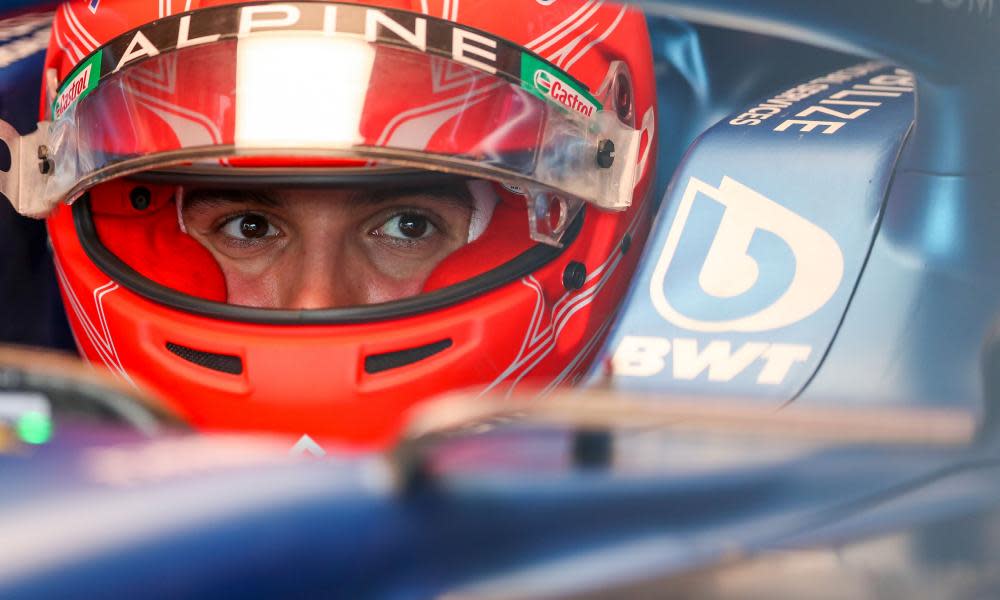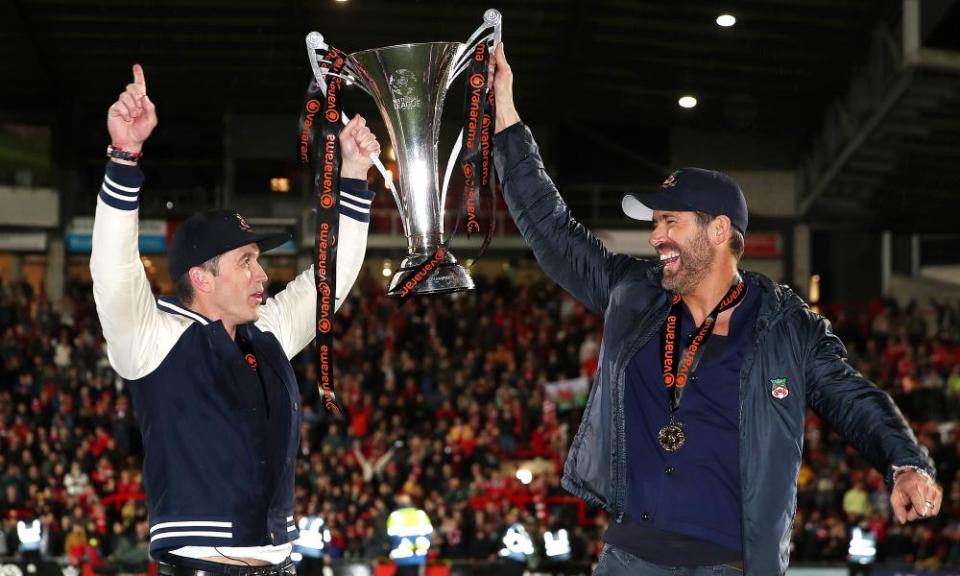Hollywood investment in Alpine illustrates F1’s strong financial health

Famously once a sport where fortunes could be drained away in a few short years, often with little or no return, Formula One, it appears, is finally making the numbers add up. Ryan Reynolds and Rob McElhenney have stolen the headlines with their investment in the Alpine team but what speaks volumes is that the consortium of which they are part wanted into F1 to the tune of £157m in the first place.
Reynolds and McElhenney, having enjoyed success following their purchase of Wrexham in 2021, have been joined by fellow actor Michael B Jordan as co-investors in the 24% stake of Alpine. However, whereas with Wrexham it was a personal affair, it is clear there is a very serious business side to them putting money into F1.
Related: Ryan Reynolds and Rob McElhenney join investors buying into Alpine F1 team
The consortium includes RedBird Capital Partners, an investment management company with a growing portfolio of sporting acquisitions which it considers yield solid returns. It has the third‑largest stake in Fenway Sports Group, owner of the Boston Red Sox, Liverpool and a stakeholder in Milan and Toulouse.
As part of the sale Alpine, owned by Renault, was valued at $900m, giving strong credence to comments made recently by the Formula One chief executive, Stefano Domenicali, on the robust fiscal health of F1. “There were teams in the past that were sold for £1, now the market is offering almost billions to teams, and they are refusing that,” he said. “The more everyone is growing, the stronger the business platform that we are all working in.”
The growth of the sport over which Domenicali presides has ensured it finds itself in the position of offering an increasingly attractive proposition with a finite number of opportunities. There are only 10 teams – a number that is not likely to rise, if it does so at all, until 2026 at the earliest. Moreover, with the budget cap imposed in 2021, they are on a road to financial sustainability and profitability.
That this is an American-led consortium also speaks to the sea change in attitude to the sport in the US. Reynolds, McElhenney and Jordan will doubtless be the poster boys for interest in what is still a struggling midfield team with grand ambitions of challenging the big three, but their eyes, alongside those of their fellow investors, were no doubt caught by the possibility of riding the wave of F1’s increasing popularity on that side of the Atlantic.

The US will host three grands prix this year – Miami, Austin and Las Vegas – the first time it has done so in the same season since 1982. Notably, the race in Miami last year attracted the highest viewing figures for F1 in the country. The Netflix series Drive To Survive clearly played a part in initiating this groundswell of interest, but the sport has capitalised on it. ESPN’s original deal to broadcast F1 in the US was for $5m a year; in 2022 F1 renewed the deal for a three-year contract, this time for a reported figure of between $75m and $90m per annum.
Expressions of interest from new teams have been made and submitted to the FIA, including one from Andretti racing, partnered with Cadillac. On Monday it was also confirmed that the British racing team Hitech has also lodged an entry to join in 2026. There are no guarantees either will be accepted by the current teams, who are loth to dilute their shares of the financial rewards, especially now they are beginning to see a return.
Indeed, when Audi was considering where next to pursue its motor racing ambition it chose F1, and in order to do so it had to buy into the Sauber team now racing as Alfa Romeo and with whom it will become works partners when the marque enters F1 in 2026. The rude health of the sport financially will have doubtless been a contributory factor for Audi. It is not alone in being attracted to the new-look, financially feasible F1.
From a performance perspective the sport has always been about maximising bang for buck, but high-profile backing into Alpine, not as a marketing tool but as an actual investment, suggests that both bangs and bucks may be the order of the day in future.

 Yahoo News
Yahoo News 
